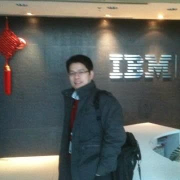IBM Maximo is designed to help organizations effectively manage and maintain their physical assets, such as equipment, facilities, and infrastructure. Maximo provides a comprehensive set of tools and features to optimize asset performance, increase operational efficiency, and reduce maintenance costs.



| Product | Market Share (%) |
|---|---|
| IBM Maximo | 22.6% |
| Oracle Enterprise Asset Management | 9.1% |
| IFS Cloud Platform | 9.0% |
| Other | 59.3% |
| Type | Title | Date | |
|---|---|---|---|
| Category | Enterprise Asset Management (EAM) | Oct 31, 2025 | Download |
| Product | Reviews, tips, and advice from real users | Oct 31, 2025 | Download |
| Comparison | IBM Maximo vs Prometheus-AI Platform | Oct 31, 2025 | Download |
| Comparison | IBM Maximo vs Infor CloudSuite | Oct 31, 2025 | Download |
| Comparison | IBM Maximo vs IFS Cloud Platform | Oct 31, 2025 | Download |
| Title | Rating | Mindshare | Recommending | |
|---|---|---|---|---|
| IFS Cloud Platform | 3.9 | 9.0% | 87% | 31 interviewsAdd to research |
| NetSuite ERP | 3.9 | N/A | 83% | 37 interviewsAdd to research |
| Company Size | Count |
|---|---|
| Small Business | 12 |
| Midsize Enterprise | 2 |
| Large Enterprise | 7 |
| Company Size | Count |
|---|---|
| Small Business | 158 |
| Midsize Enterprise | 102 |
| Large Enterprise | 450 |
With Maximo, organizations can track asset information, schedule maintenance activities, manage work orders, and generate reports for data-driven decision-making. It enables proactive maintenance planning, streamlines workflows, and improves asset uptime. Maximo is scalable, flexible, and can integrate with other enterprise systems to provide a unified view of asset information. Overall, IBM Maximo is a robust EAM solution that empowers organizations to effectively manage their assets throughout their lifecycle and maximize their value.
IBM Maximo Features:
IBM Maximo Benefits:
Reviews from Real Users
Chris Lok, COO / Developer at MaxLogic, states that IBM Maximo is “A rare enterprise asset management system with good ROI and helpful technical support”
Klemen Muhvič, Computer System Engineer at Informatika d.d., writes that IBM Maximo's "Most valuable features are the ability to create work orders and preventative maintenance."
Anil Bhagwatsaran, Application Specialist at Blue Waters, says that "The most valuable features of IBM Maximo are the overall power and interface, and there are a lot of different modules that we use that are helpful. Additionally, it's an integrated solution and it has a lot of capabilities."
IBM Maximo was previously known as Maximo.
Royal Boskalis Westminster N.V., DTE Energy, Swedish Match, Projetech, Fingrid, East Coast
| Author info | Rating | Review Summary |
|---|---|---|
| Maximo Team lead at Masters United | 4.5 | No summary available |
| Founder at SMPLX | 2.5 | I found IBM Maximo particularly useful for power line operations, allowing linemen to provide and receive crucial information. However, the system was slow, which frustrated us and needed improvement, although it still effectively facilitated field communication. |
| Director of operations at Vetasi | 5.0 | I use IBM Maximo across diverse industries like manufacturing, pharmaceuticals, and transportation. Its valuable features include work management and optimization, though improvements are needed in pricing, purchasing, invoicing, and mobility, with mobility being the most crucial area requiring enhancement. |
| COO / Developer at MaxLogic | 4.5 | No summary available |
| Core Funder at O4AI | 4.5 | I sell IBM Maximo to clients needing efficient asset management and maintenance scheduling. It offers powerful audit features and APIs for integration but requires high computing power for its complex interface, which can slow performance and complicate upgrades. |
| Manager OSS & System Admin at a comms service provider with 1,001-5,000 employees | 3.5 | No summary available |
| Computer System Engineer at Informatika d.d. | 4.0 | No summary available |
| Business Analyst at a government with 1,001-5,000 employees | 3.5 | No summary available |